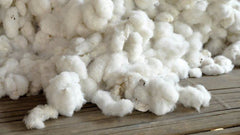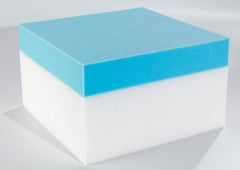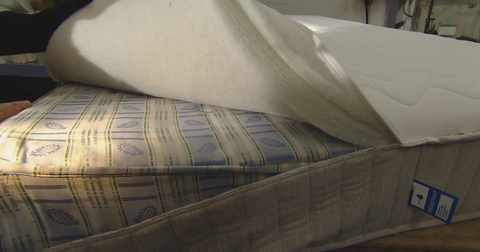Choosing the Right Mattress for Your Needs
When choosing a new mattress there are a few things you should consider before making your final decision, remember we spend a third of our lives in bed, and our quality of sleep can have varying positive or negative affects on how we feel in daily life.
When selecting your mattress or bed you will need to consider the size of your room and any extra storage needs you may have, and you'll want to consider your weight when deciding upon a supportive mattress.
Mattresses are made from a variety of different materials, each with their own unique properties so you will be better off knowing what you want to get out of a mattress before making a decision. Softer mattresses are usually cheaper than their firmer counterparts, simple because of the reduced material content.
First things first...
What Size is Your Bed?
This question may seem trivial, but from time to time we have had customers who didn't know what size their existing bed was or whether they'd have the room to set-up their new bed.
If you know your bed sizes, this one's easy. If you're not sure and you want to make sure, just measure the area you have available and make sure you take the measurements with you whenever you visit any bed shop and they should be able to advise you further.
UK Bed Sizes:
| Width x Length (Imperial) | Width x Length (Metric) | |
| Small Single | 2'6" x 6'3" | 75cm x 190cm |
| Single | 3'0" x 6'3" | 90cm x 190cm |
| Small Double / Three Quarter | 4'0" x 6'3" | 120cm x 190cm |
| Double | 4'6" x 6'3" | 135cm x 190cm |
| King Size | 5'0" x 6'6" | 150cm x 200cm |
| Super King Size | 6'0" x 6'6" | 180cm x 200cm |
You will probably be looking for a single bed for a small child or if you're really limited on space.
If you're not already sure on the size you will need your best option is to visit a bed shop and try out the different sizes for yourself.
How Firm Do You Want Your Mattress?
If you suffer from back problems then an orthopaedic mattress is going to be a worthwhile investment as a properly developed orthopaedic sleep system can often relieve the pain associated with a number of back problems.

Firm mattresses can help realign a crooked spine from incorrect posture or sleeping in an uncomfortable position, if you often wake with back pain every morning, the culprit could be an unsupportive mattress.
If you prefer to sleep on the softer side then there is still a lot to consider, a basic mattress containing a 13.5 gauge open coil spring system may have you feeling like you're floating on air, however a 2000 pocket sprung memory foam mattress will have just enough support to make you feel grounded, yet you will sink into the memory foam and perhaps find it hard to escape.
When it comes to firmness ratings, every bed retailer and mattress manufacturer seems to use their own system, so ratings don't translate from one shop to another, or one brand to another. It is always best to use your own judgement and try out as many different firmness levels for yourself before buying a new mattress.
There is also the question of which materials you'd like inside your mattress...
Polyester is used as a cheap filling, but is also a great high density material for creating super firm orthopaedic sleep systems.
Cotton and Wool are fantastic natural fibres which both have heat regulating properties, and provide excellent levels of comfort.
Horse Hair, Silk and Cashmere are often used in high-end mattresses, these materials are desirable because of their durable qualities.
Memory Foam, Cool Blue Gel and other foams are man-made materials created for the sole purpose of providing comfortable sleep, so bare this in mind when choosing your new mattress.
Which Spring System Should You Go For?
At the heart of the mattress you will find the spring support system, however some mattresses do not contain springs and instead use firm high density foam as the supportive base layer.
Open Coil
Open coil springs, also known as "bonnell" or "normal" mattress springs, are linked together which spreads body weight evenly across the bed and gives the mattress a firm edge. 13.5 gauge springs are suited to people who prefer a softer mattress and 12.5g springs provide more resistance. Open coil springs combined with high density polyester fibres provide a firm orthopaedic mattress.
Pocket Sprung
Pocket springs are small springs contained in fabric pockets and stitched together. Each spring expands and contracts independently, giving the mattress the ability to contour to your body shape. More costly than open coil springs, but pocket springs provide more durability and arguably comfort, they are available in multiple configurations and usually found in higher-end mattresses.
High Density Foam
High Density Foam mattresses are for those who don't like springs. These mattresses often come rolled and vacuum sealed, expanding to their full size once unwrapped. Foam mattresses like these provide support to your body by responding to heat and pressure, and are often combined with Memory Foam for comfort or thereputic purposes. A consideration for people who toss and turn at night.
How Much Are You Willing to Pay?
Your budget will ultimately dictate the quality of the mattress you end up sleeping on. Pocket sprung mattresses are usually at least double the price of their open coil counterparts, with spring count having a major impact on the cost of a new mattress.
Natural materials tend to cost more because they aren't as abundant as the man-made materials used in mattress making, such as polyester. Luxury materials such as cashmere and silk are used in high-end mattresses for their comfort and durability, with materials such as latex and memory foam also coming at an added premium.
It is also worth noting how the means of manufacture can influence the price you pay. Mattresses that are hand-made are labour intensive, and often take multiple workers hours or even days to complete your mattress. On the other hand machine-made mattresses can be churned out of the factory at a much quicker and more efficient rate.
Budget range mattresses are normally adequate for young children or occasional sleeping, but be careful about buying the cheapest mattress available using price as your only factor, they often aren't designed to take the weight of an adult and are usually a false economy purchase.
Beware of Phoneys!
It's extremely hard to tell a genuine mattress made by a reputable manufacturer from one re-manufactured by a bunch of cowboy traders, but they do exist and they should be avoided at all costs.
If you are offered a mattress at your doorstep, unsolicited by men in a van, then act with caution. Also be careful buying online with websites such as eBay and Facebook, do your research on the sellers as often mattresses sold are not what are advertised online and if the price seems too good to be true, it's often been re-manufactured.

Re-manufactured mattresses are no laughing matter!
These mattresses are often salvaged from scrap yards, using second-hand springs systems and whatever material they can get their hands on to serve as comfort fillings. Professional equipment is used to stitch a brand-new cover on the mattress, but what's inside has been used, sometimes for years and could contain hazardous materials.
There have been cases of mattresses seized containing used springs and newspaper as filling, this is a huge fire hazard and it's not worth the risk to your health dealing with the sellers of these knock-off mattresses.
So...
Make sure you know the size you're looking for and try to get an idea of how firm you want your new mattress to be.
Do some research on the various materials, spring systems and reputations of who you may be dealing with, it's worthwhile since a new bed can be a huge purchase and is definately the most important piece of furniture we use in our lives.
Try out various mattresses before you buy so you can make sure you get something that's both comfortable and supportive.
Always make sure the mattress meets fire safety regulations and comes with a lengthy warranty if you want that extra peace of mind.
